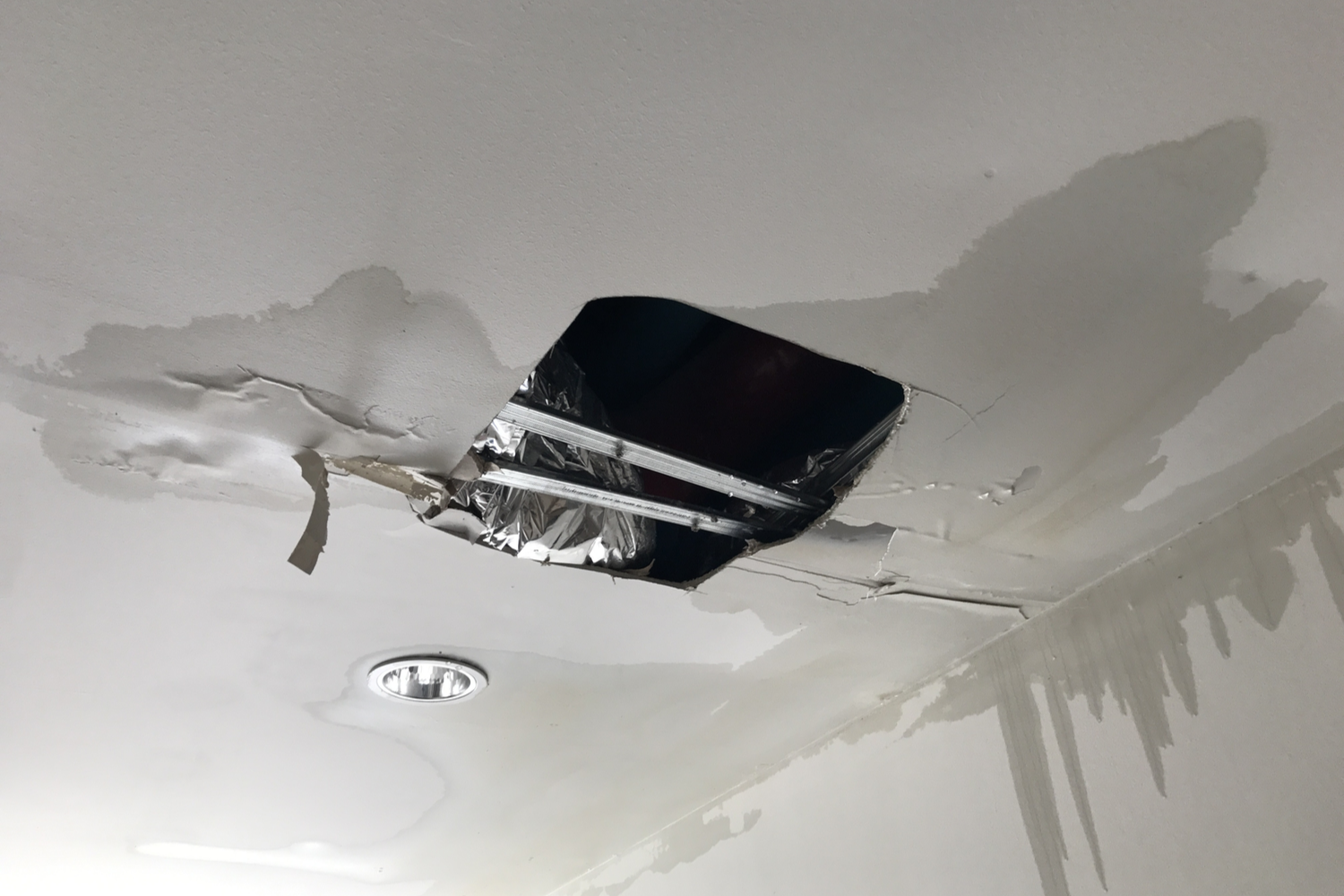You can see water leaking from your ceiling, but it isn’t really the ceiling that is leaking, it’s a symptom of some other problem in your home. When you notice staining on the ceiling drywall or plaster, or find water dripping from the ceiling, it is usually the result of one of two problems; your roof is leaking or there is a problem with your plumbing system. Either issue can cause untold damage to your home and you need to take quick action to identify, and then remediate, the problem.
Symptoms of a Leak Above Your Ceiling
The first sign that there is water dripping from the ceiling may not be seeing the actual water dripping. There are other indicators that a problem exists:
- Discoloration or staining
- Sagging drywall or light fixtures
- Buckling or cracking plaster
- Blistering or peeling paint
Until the problem is identified, you won’t know what approach to take to solve the problem.
Problems That Cause a Ceiling to Leak
Roofing Problems
If the leak is directly below an attic space or the roof itself, and there are no water lines of any kind over the area, the leak is more than likely a result of damaged shingles, missing caulking around vent stacks flashing, or a chimney. Water that enters the home through the roof is usually brown or dirty in color. This is due to the materials and impurities it passes through before it contacts the ceiling.
The Repair
You need to physically inspect the roof for missing or damaged shingles and missing caulking or gaps in the caulking. If you can enter the attic you may be able to locate the source of the leak before you actually go up on the roof. Look for dripping or a running stream of water on the roof sheathing or rafters. The problem may be directly over the wet spot, or it could be located further up the roofline. You can replace any damaged shingles without having to re-shingle the entire roof if you choose to do so. If missing caulking is the problem, scrape away any loose caulking and then re-caulk the area with a good, high-quality silicone caulk designed for outdoor use.
Plumbing Problems
If the ceiling leak is a result of a plumbing problem, it will probably be located below a bathroom or a kitchen, from either water supply lines, plumbing fixtures, or drain lines. Water leaks from most plumbing problems are clear in color. If the problem is with a faulty supply line, the leak will flow constantly. If a drain line is the problem, it will only leak when water passes through the drainpipe.
The Repair
Figuring out the source of plumbing leaks can be tricky and it almost always involves a process of elimination. A faucet may leak continuously or only when it is turned on. If you can’t see the leak at first, plug the sink or tub drain and turn on the water. If the leak becomes apparent you know the supply line needs to be addressed. If no water can be seen, turn off the faucet and remove the drain plug. If you see the water leak, the drain line is the problem. If you have any plumbing skills you can attempt to fix the problem yourself. If not, the help of a professional plumber may be required.
What About the Ceiling?
When you notice any signs of a ceiling leak you need to address the issue immediately. It is highly possible that there is much more water above the surface of the ceiling than what you can see. Spread plastic on a large part of the floor below the leak. Place a bucket under the leak. Use a screwdriver or similar tool to gently poke a hole near the middle of the wet area (take care about using an electric drill around the area of a water leak. Water and electricity do not mix very well). Making this hole will allow the water to empty into the bucket and keep the weight of the water from collapsing the ceiling.
It is important to contact a water damage restoration company like Water Mold Fire Restoration. Our experienced teams of water damage specialists will be able to remove any remaining water and then dry any wet structural components. By rapidly drying any water-affected materials before repairs are attempted will help reduce the chance of mold developing. We can be contacted by phone 24/7/365 at 800-905-0277 or by email at help@watermoldfire.net.








